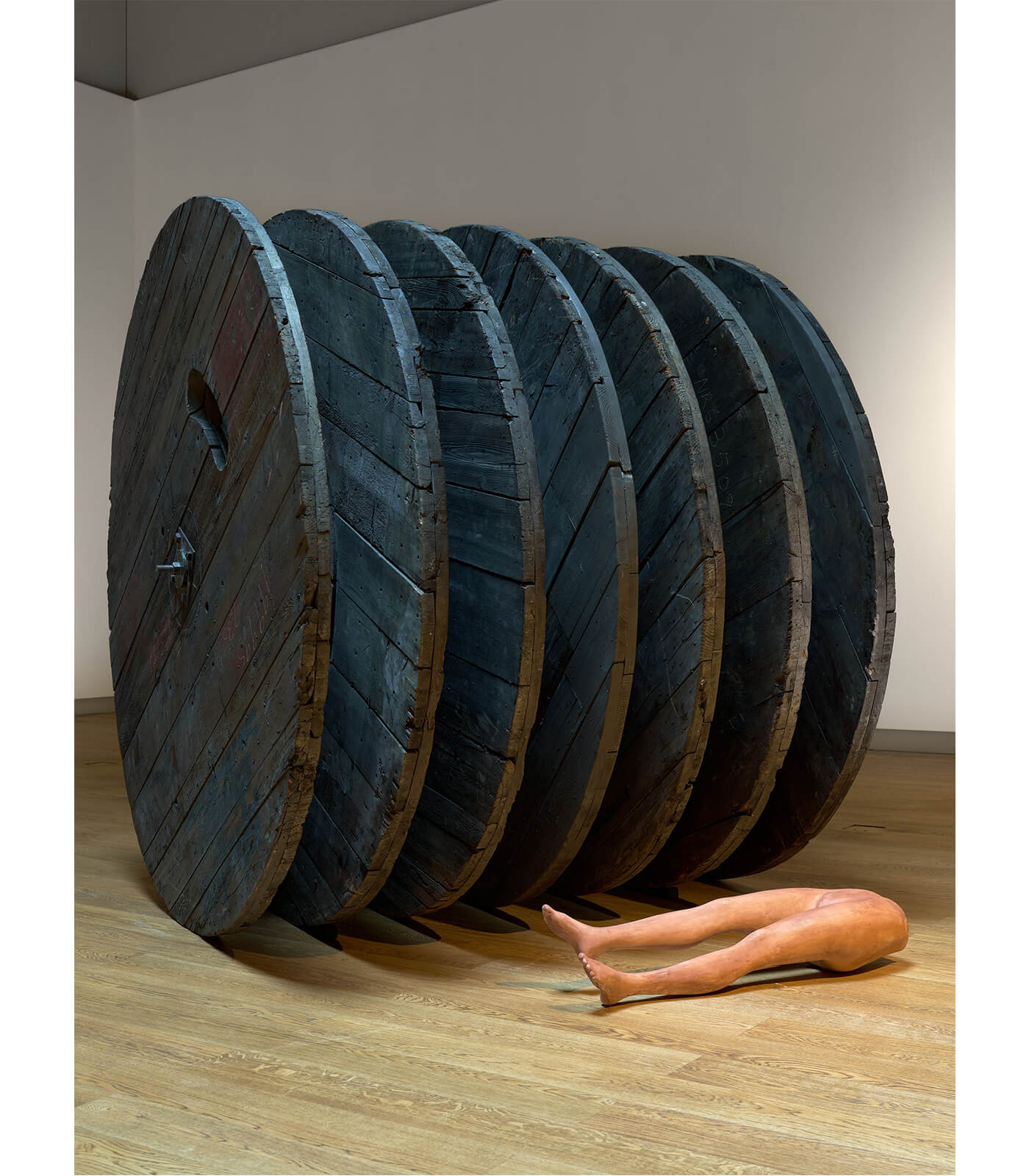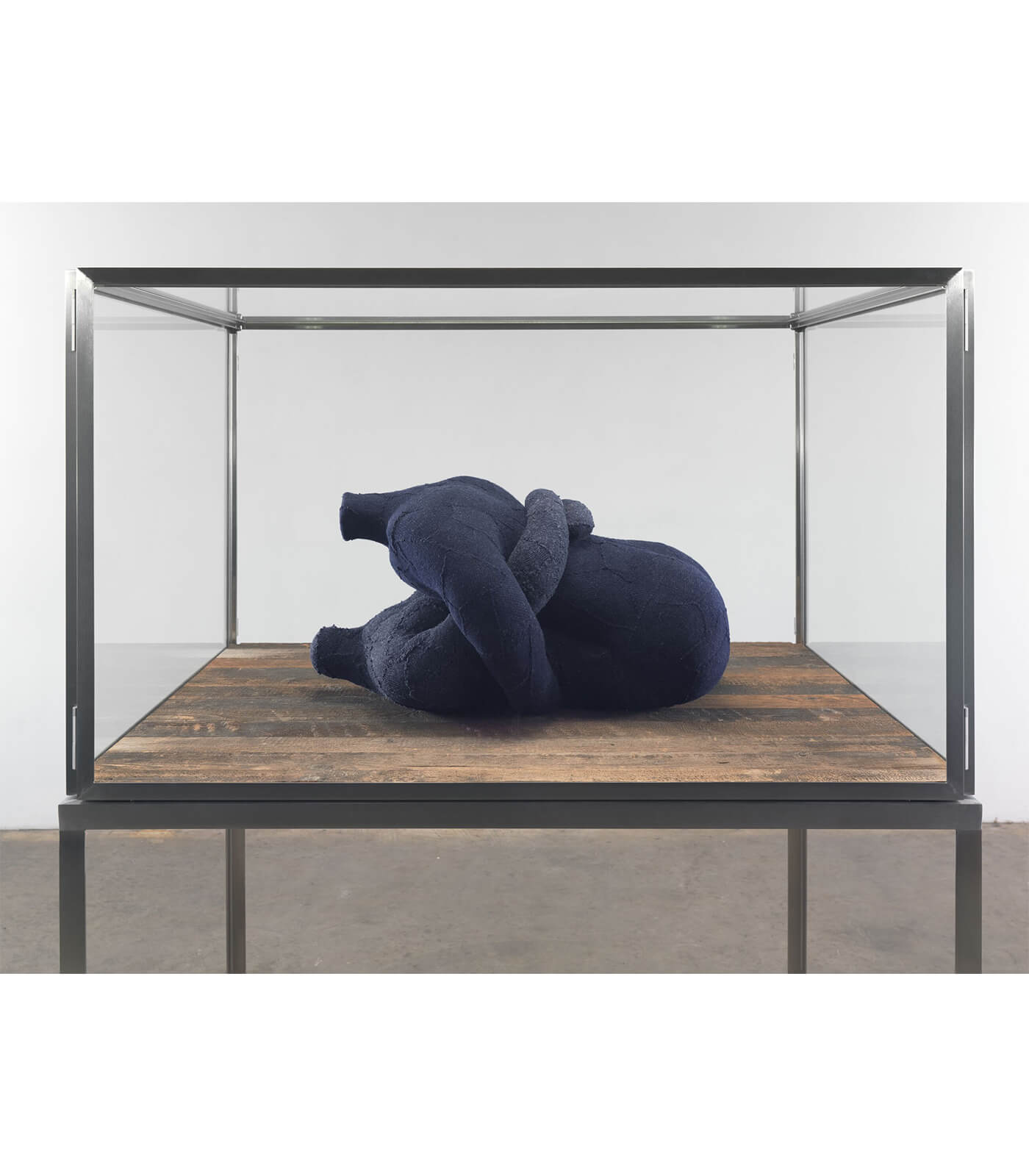
Louise Bourgeois
Maladie de l’Amour
19 June – 26 September 2021
Monaco
The wish to remain connected to the Other is at the same time a warding off of the fear of rejection and isolation.
Explore the exhibition
Philip Larratt-Smith introduces the inaugural exhibition at Hauser & Wirth in Monaco, ‘Louise Bourgeois. Maladie de l’Amour,’ which explores the motif of the couple and its discontents through a selection of sculptures, installations, and works on paper. For Bourgeois, the relation to the Other has a fundamental importance, yet the desire for the Other carries within it the fear of rejection, abandonment, and isolation.

The common trope of love as a ‘mal’ or sickness has its roots in medieval ‘trobar’ (frequently composed in the South of France) and the traditions of courtly literature. Love is conceived as a sickness which consumes the lover even as it refines and elevates her sensibility. All thought and feeling become concentrated in the beloved, which engenders in the lover a loss of interest in the world around and a withdrawal of affect from other objects. This state of heightened vulnerability and sensitivity becomes a modality for perceiving the world.

The exhibition title also references the popular song of the same name with its chorus ‘maladie de l’amour, maladie de la jeunesse’. The origins of Bourgeois’ own malady lay in the events of her early childhood, and in particular the Oedipal fixation on her father which she never fully shook off. (Bourgeois’ favourite novel was Françoise Sagan’s ‘Bonjour Tristesse’, in which a young girl on vacation in the Midi sabotages her widower father’s summer romance.) There is an oscillation in Bourgeois’ art between the need to ward off the fear of separation and the wish to break up the couple.

Toi et moi
2002

Shredder
1983

The constellation of works in the exhibition bear directly or obliquely on this dynamic. The installation ‘Toi et Moi’ (2002), in which a mirror gives back distorted images of the Other, explores how desire structures our perceptions. ‘Shredder’ (1983) is an expression of rejection, jealousy, and murderous hostility. Two sculptures, ‘Couple’ (1996) and ‘Couple’ (2002), consisting of two fabric torsos embracing speak to the couple as a two-in-one: they are stitched together and cannot exist without each other, a state of dependency which is not without its dark side.

Three suites of flat works flesh out the show’s narrative dimension. The print portfolio ‘The Puritan’ (1947 Text; 1990-1997) tells the story of a man afraid of his own desires. The unique large-scale suite ‘When Did This Happen?’ (2007) attempts to trace back the aetiology of the trauma, which is here related to the capacity for image-making. ‘The Family’ (2008) consists of twelve views of a couple in which penetration, pregnancy, and motherhood are collapsed into a single moment in time.

In conjunction with the exhibition, one of the artist’s spider sculptures will be installed in the gardens adjacent to the gallery. Bourgeois conceived of the spider as a symbol of her mother, who was a seamstress in the family’s tapestry restoration atelier. It is also a kind of self-portrait, for just as the spider spins its web out of its body, Bourgeois believed her sculpture came directly out of her body.


On view in Monaco
‘Louise Bourgeois. Maladie de l’Amour’ is open at Hauser & Wirth Monaco, Tue – Sat, 10 am – 6 pm. To plan your visit please visit our location page.
All Images: © The Easton Foundation / ADAGP, Paris 2021
About the Artist

Louise Bourgeois
Born in France in 1911, and working in America from 1938 until her death in 2010, Louise Bourgeois is recognized as one of the most important and influential artists of our time. For over seven decades, Bourgeois’s creative process was fueled by an introspective reality, often rooted in cathartic re-visitations of early childhood trauma and frank examinations of female sexuality. Articulated by recurrent motifs (including body parts, houses and spiders), personal symbolism and psychological release, the conceptual and stylistic complexity of Bourgeois’s oeuvre—employing a variety of genres, media and materials—plays upon the powers of association, memory, fantasy, and fear.
Bourgeois’s work is inextricably entwined with her life and experiences: fathoming the depths of emotion and psychology across two- and three-dimensional planes of expression. ‘Art,’ as she once remarked in an interview, ‘is the experience, the re-experience of a trauma.’ Arising from distinct and highly individualized processes of conceptualization, Bourgeois's multiplicity of forms and materials enact a perpetual play: at once embedding and conjuring emotions, only to dispel and disperse their psychological grasp. Employing motifs, dramatic colors, dense skeins of thread, and vast variety of media, Bourgeois's distinctive symbolic code enmeshes the complexities of the human experience and individual introspection.
Rather than pursuing formalist concerns for their own sake, Bourgeois endeavored to find the most appropriate means of expressing her ideas and emotions, combining a wide range of materials—variously, fabric, plaster, latex, marble and bronze—with an endless repertoire of found objects. Although her oeuvre traverses the realms of painting, drawing, printmaking, and performance, Bourgeois remains best known for her work in sculpture.
Bourgeois’s early works include her distinct 'Personages' from the late 1940s and early 1950s; a series of free-standing sculptures which reference the human figure and various urban structures, including skyscrapers. The ‘Personages’ served as physical surrogates for the friends and family Bourgeois had left behind in France, while also highlighting an interest in architecture dating back to her childhood. Her installation of these sculptures as clustered ‘environments’ in 1949 and 1950 foreshadowed the immersive encounters of installation art twenty years before the genre’s rise to prominence.
Bourgeois’s work was included in the seminal exhibition ‘Eccentric Abstraction,’ curated by Lucy Lippard for New York's Fischbach Gallery in 1966. Major breakthroughs on the international scene followed with The Museum of Modern Art in New York's 1982 retrospective of her work; Bourgeois's participation in Documenta IX in 1992; and her representation of the United States at the 45th Venice Biennale in 1993.
In 2001, Bourgeois was the first artist commissioned to fill the Tate Modern’s cavernous Turbine Hall. The Tate Modern’s 2007 retrospective of her works, which subsequently traveled to the Centre Pompidou in Paris; The Guggenheim Museum in New York; The Museum of Contemporary Art in Los Angeles; and The Hirshhorn Museum & Sculpture Garden in Washington D.C., cemented her legacy as a foremost grande dame of late Modernism.
Header image: Louise Bourgeois, ARCHED FIGURE, 1993 © The Easton Foundation/VAGA, NY, Photo: Christopher Burke
Inquire about available works by Louise Bourgeois
On view now through 26 September 2021 at Hauser & Wirth Monaco.
–
An exhibition entitled ‘Louise Bourgeois, Freud’s Daughter’ of works and writings by the artist is also currently on show at The Jewish Museum in New York until 12 September 2021.
Related Content
Current Exhibitions
1 / 12



















